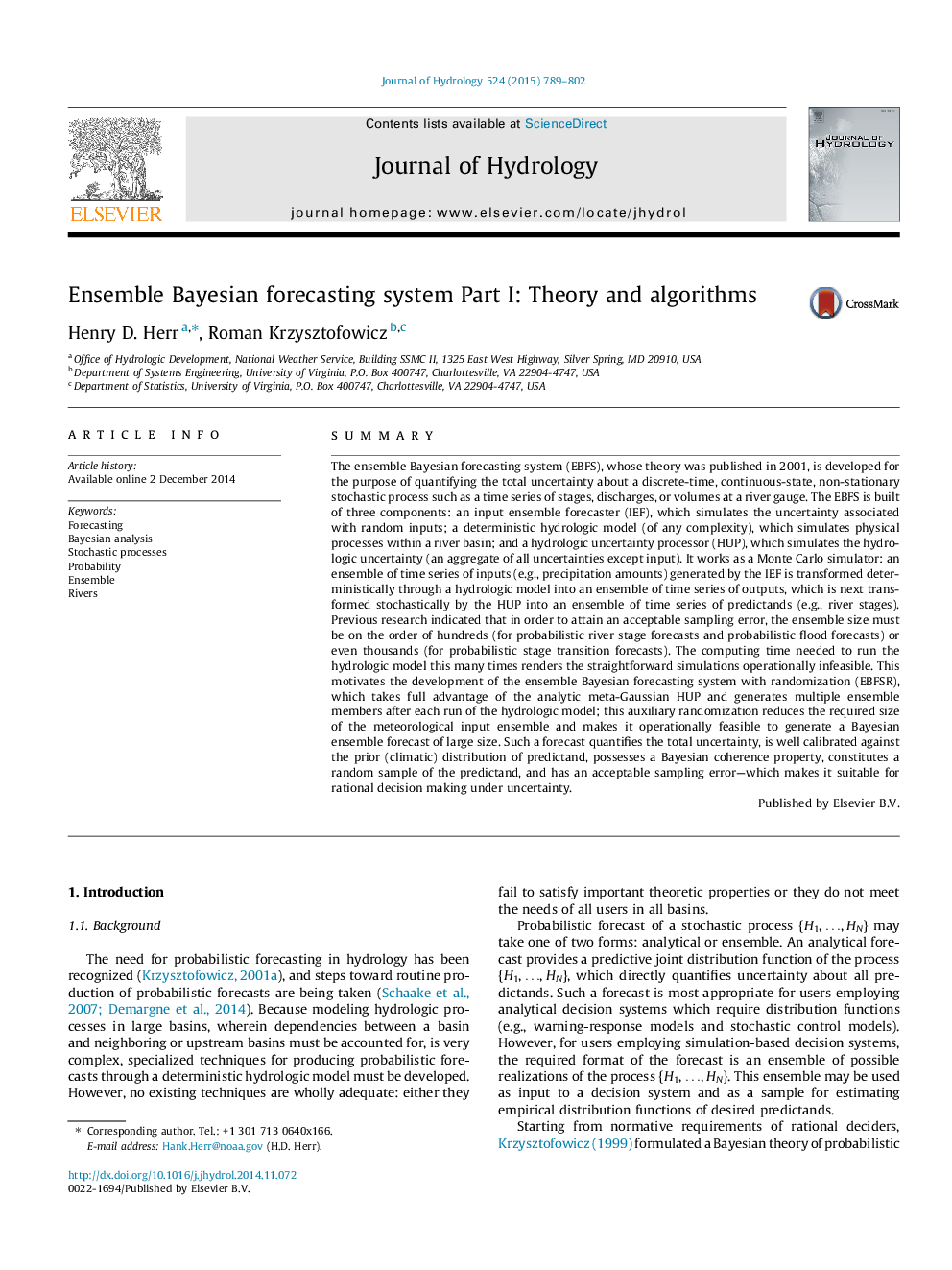| Article ID | Journal | Published Year | Pages | File Type |
|---|---|---|---|---|
| 6411519 | Journal of Hydrology | 2015 | 14 Pages |
â¢Bayesian theory enables ensemble forecasting via deterministic hydrologic model.â¢Ensemble must be random and large to not cause sampling error or erroneous decision.â¢Ensemble Bayesian forecasting system (EBFS) works as Monte-Carlo simulator of series.â¢The EBFS satisfies three requirements of rational decision making.â¢The EBFSR generates multiple ensemble members per each run of the hydrologic model.
SummaryThe ensemble Bayesian forecasting system (EBFS), whose theory was published in 2001, is developed for the purpose of quantifying the total uncertainty about a discrete-time, continuous-state, non-stationary stochastic process such as a time series of stages, discharges, or volumes at a river gauge. The EBFS is built of three components: an input ensemble forecaster (IEF), which simulates the uncertainty associated with random inputs; a deterministic hydrologic model (of any complexity), which simulates physical processes within a river basin; and a hydrologic uncertainty processor (HUP), which simulates the hydrologic uncertainty (an aggregate of all uncertainties except input). It works as a Monte Carlo simulator: an ensemble of time series of inputs (e.g., precipitation amounts) generated by the IEF is transformed deterministically through a hydrologic model into an ensemble of time series of outputs, which is next transformed stochastically by the HUP into an ensemble of time series of predictands (e.g., river stages). Previous research indicated that in order to attain an acceptable sampling error, the ensemble size must be on the order of hundreds (for probabilistic river stage forecasts and probabilistic flood forecasts) or even thousands (for probabilistic stage transition forecasts). The computing time needed to run the hydrologic model this many times renders the straightforward simulations operationally infeasible. This motivates the development of the ensemble Bayesian forecasting system with randomization (EBFSR), which takes full advantage of the analytic meta-Gaussian HUP and generates multiple ensemble members after each run of the hydrologic model; this auxiliary randomization reduces the required size of the meteorological input ensemble and makes it operationally feasible to generate a Bayesian ensemble forecast of large size. Such a forecast quantifies the total uncertainty, is well calibrated against the prior (climatic) distribution of predictand, possesses a Bayesian coherence property, constitutes a random sample of the predictand, and has an acceptable sampling error-which makes it suitable for rational decision making under uncertainty.
